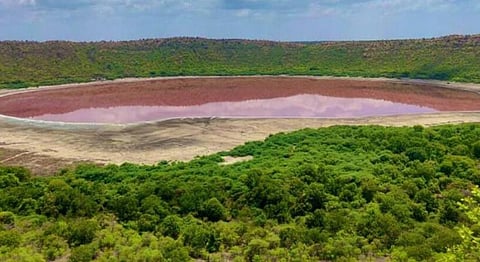
- HOMEGROWN WORLD
- #HGCREATORS
- #HGEXPLORE
- #HGVOICES
- #HGSHOP
- CAREERS
- ABOUT US
- CONTACT US

The waters of the Lonar Lake in Maharashtra have turned pink overnight, baffling the locals and scientists alike. The 77.69-hectare lake area is part of the Lonar sanctuary spanning 3.66 sq.km. The Lonar Lake was formed when a meteorite hit the Earth some 50,000 years ago. Experts have attributed the change in colour to the salinity and presence of algae in the water body. The lake has saline water with pH 10.5, Gajanan Kharat, member of the Lonar lake conservation and development committee, told PTI. He further said, “There are algae in the water body. The salinity and algae can be responsible for this change.”
“There is no oxygen below one meter of the lake’s water surface. There is an example of a lake in Iran, where water becomes reddish due to an increase in salinity,” he continued.
Kharat said that the level of water in the Lonar lake is presently lower as compared to the few past years, and there is no rain to pour fresh water in it. “The low level of water may lead to increased salinity and change in the behaviour of algae because of atmospheric changes...this may be the reason for colour change. This is not the first time that the colour of water has changed,” he added.
Located around 500 km from Mumbai, the Lonar lake in Buldhana district is a popular tourist hub and also attracts scientists from all over the world. Deccan Herald notes that the lake was first discovered by JE Alexander in 1823. It is also mentioned in the Skanda Purana, the Padma Purana and Ain-i-Akbari, and is the world’s third largest crater formed due to a meteorite strike.
Quoting a study by IIT Bombay, the Deccan Herald reported that the minerals in the lake soil are very similar to the minerals found in moon rock brought back during Apollo Programme.
Firstpost reports that a similar phenomenon takes place in Umria lake in Iran, as noted by APCCF & Melghat Tiger Reserve (MTR) field director, MS Reddy. The decreased water level in summer might have created a condition which is conducive for being the breeding ground of Dunaliella algae, according to Reddy.
If you enjoyed reading this article, we suggest you also read:
